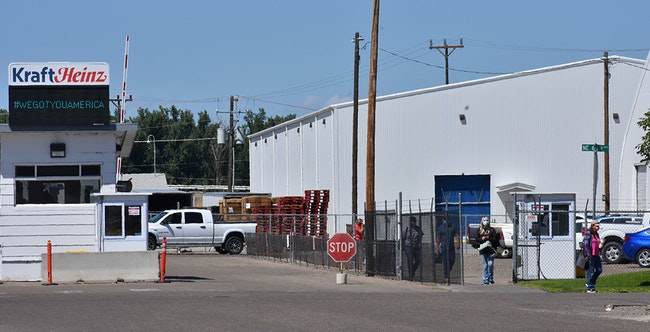
Companies like Kraft-Heinz are hiring around the region. (The Enterprise FILE)
ONTARIO – Pandemic-related unemployment benefits ended earlier this month, but experts say it’s too soon to tell how that will impact the Malheur County economy, or if it will ease the labor shortage with a wave of new applicants as employers hope.
The available data indicates that any change to the labor force will be small.
“Malheur County is really pretty close to employment levels prior to the pandemic,” said Christopher Rich, a regional economist for the Oregon Employment Department.
All pandemic-related federal unemployment programs ended on Sept. 4, including the federal pandemic unemployment compensation providing an extra $300 a week.
In July, 181 people filed for regular state unemployment benefits in Malheur County, according to data from the OED. In July 2020, there were 428.
The July 2021 claims are closer to the July 2019 amount of 124, which Rich said indicates a return to pre-pandemic levels.
John Breidenbach, the president of the Ontario Area Chamber of Commerce, said that employers are seeing the impact.
“From what I’m hearing from the businesses is they’re getting people back to work, and they’re happy about it,” said Breidenbach.
Malheur County currently has the third lowest unemployment rate in the state, at 4.3%. It was 3.5% prior to the pandemic in February 2020, and peaked at 7.7% in April 2020 before returning to relatively normal rates.
Having one of the lowest unemployment rates in the state is likely a contributing factor to the labor shortage, and a variety of pandemic-related factors such as health concerns and at-home schooling may have kept people out of work.
Rich, the regional economist, said that the current data suggests there won’t be a big shift in the labor market after the cut to benefits, but the picture will be clearer in a few months.
“There are data points that suggest that the cutoff is actually going to have a limited impact on labor supply,” Rich said. “Given the data I’m looking at, it doesn’t look like it will have much of an impact.”
In July, Malheur County residents received a total of $1,234,548 in unemployment payments. This included all regular unemployment and the additional federal allotment.
Josh Lehner, an economist at the Oregon Office of Economic Analysis, said there will be a lag in people looking for jobs after the cutoff, because some have savings or shifted to other benefit programs.
He said that in some cases, the extra $300 per week put people 30% above their previous earnings.
“Even though the benefits ended two weeks ago, it doesn’t mean they need to find a job tomorrow,” Lehner said.
He said someone’s savings will determine how long they can wait before they will take a job to pay the bills, which for some could be around Thanksgiving. By that point, the data about the effect of the cutoff will be clearer.
Lehner said anecdotal comments from business owners in the region indicate that more people may be starting to look for work, but that those could also be related to other factors such as kids returning to school.
In the meantime, he said employers will likely hire more people who require more training or have gaps on their resume. Even if more people start looking for jobs around then, the labor market will remain tight with around 70% of open positions being difficult to fill.
“We’re not going to go back to a world where it’s easy to find workers,” Lehner said.
News tip? Contact [email protected].
EXCELLENCE IN JOURNALISM – Available for $5 a month. Subscribe to the digital service of the Enterprise and get the very best in local journalism. We report with care, attention to accuracy, and an unwavering devotion to fairness. Get the kind of news you’ve been looking for – day in and day out from the Enterprise.




